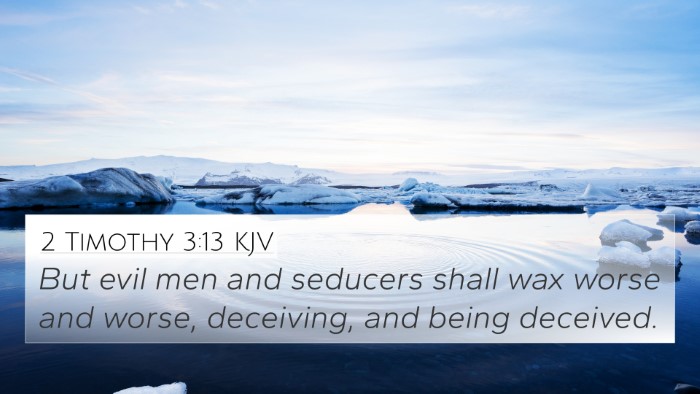Understanding Leviticus 13:35
Leviticus 13:35 states, "But if the leprosy break out in the skin, and the leprosy cover all the skin of him that hath the plague from his head even to his foot, wheresoever the priest looketh, then the priest shall consider; and behold, if the leprosy hath covered all his flesh, he shall pronounce him clean that hath the plague; it is all turned white: he is clean."
Summary of the Verse
This verse deals with the case of leprosy, which was considered a serious ceremonial and physical impurity in ancient Israel. It specifically addresses the condition of a person whose leprosy has spread extensively throughout their body. The conclusion from the priest's examination leads to the determination of cleanliness or uncleanness based on the examination of the affected individual.
Commentary Insights
Matthew Henry's Commentary
Matthew Henry emphasizes the meticulous nature of the examination by the priest. He points out that the priest's role is crucial in determining the spiritual and physical state of the individual. Henry notes that even though the disease appears widespread, the declaration of being "clean" affirms God's mercy and grace. This perspective underlines the importance of God’s law in the life of Israel.
Albert Barnes' Notes
Barnes provides insights into the ritual implications of leprosy and the priest’s responsibilities. He elaborates on the notion of a person being declared clean when the leprosy is deemed to have transformed entirely to a condition that reflects purity. Barnes also highlights the community's need for clarity and health, considering the contagious nature of the disease and its social implications.
Adam Clarke's Commentary
Clarke discusses the contextual significance of leprosy in the biblical narrative, relating it to sin and spiritual ailments. He mentions that the priest acts as a mediator between God and the people, emphasizing the symbolic nature of cleanliness and spiritual health. Clarke notes the importance of obedience to the laws of God and how physical conditions were tied to spiritual states in the community.
Cross-References to Leviticus 13:35
- Leviticus 13:2: Discusses the examination of skin diseases by the priest.
- Leviticus 13:12-13: Detailed examination criteria for leprosy.
- Leviticus 14:2-7: Procedures for cleansing a leper after healing.
- Numbers 12:10: Miriam's leprosy and the implications of her sin.
- Deuteronomy 24:8: Regulations concerning leprosy and community health.
- Matthew 8:2-3: Jesus healing a man with leprosy, mirroring themes of purity.
- Luke 17:12-14: Jesus' interaction with ten lepers, emphasizing faith and healing.
- Hebrews 13:13: Relational aspects of purity and the church community.
- Revelation 21:27: Symbolic cleanliness in the New Jerusalem, relating to God's holiness.
Thematic Connections
Leviticus 13:35 connects to broader themes in the Bible, such as the interplay between physical affliction and spiritual status. This is significant for understanding lepers' role in society both in ancient Israel and the New Testament.
Tools and Methods for Cross-Referencing
Engaging with cross-references in the Bible can yield deeper insights:
- Bible Concordance: Helpful for locating related verses.
- Bible Cross-Reference Guide: Assists in understanding scripture connections.
- Cross-Reference Bible Study: A systematic approach to examining linked verses.
- Bible Reference Resources: Various tools available for thematic studies.
Conclusion
The examination of leprosy in Leviticus 13:35 serves not only as a health regulation but also demonstrates God's laws regarding purity, societal interaction, and spiritual symbolism. As we analyze this verse in conjunction with related scriptures, we uncover rich theological themes emphasizing the grace and mercy inherent in God’s covenant with His people.






